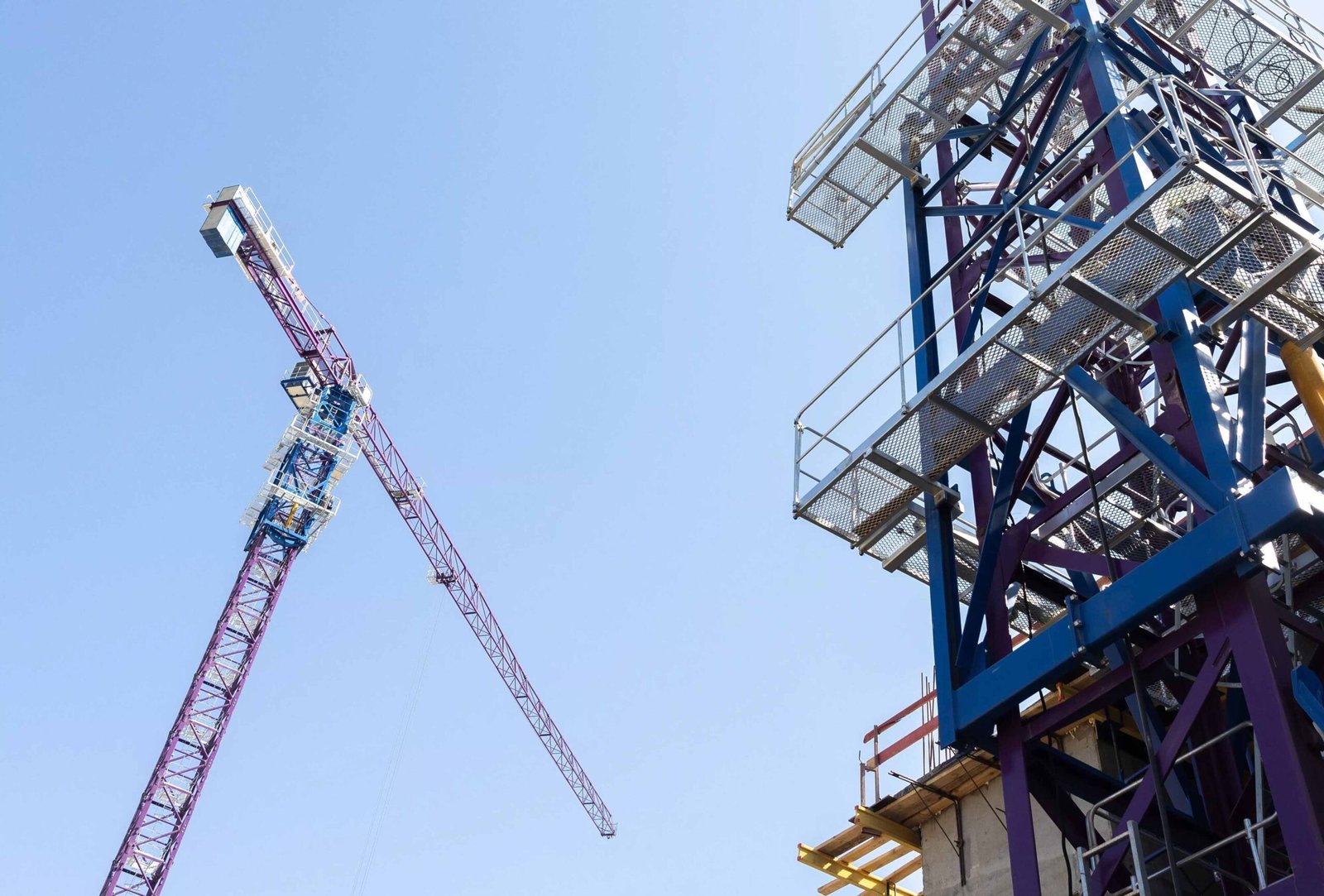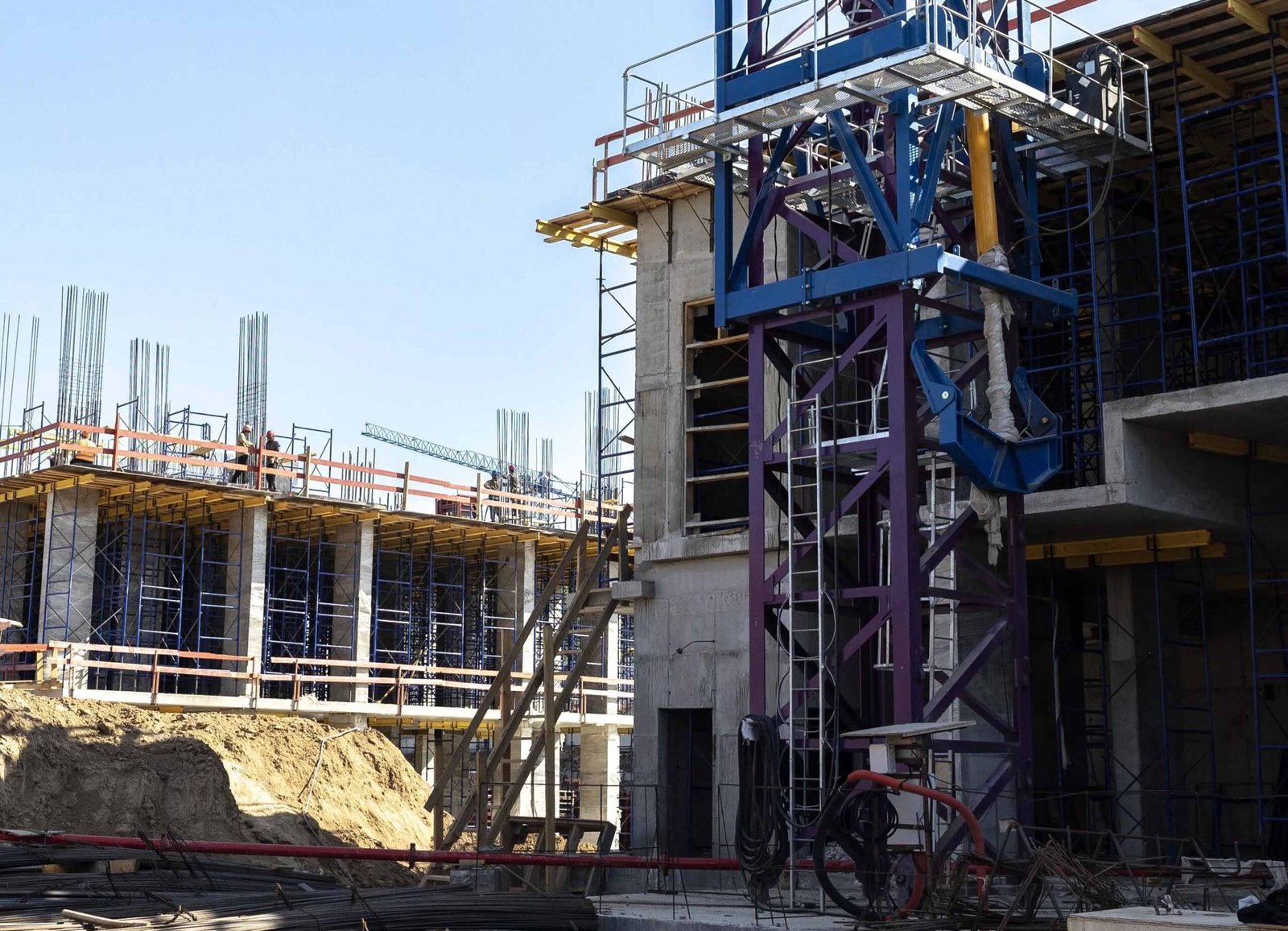
Have you ever wondered how tower cranes reach such impressive heights? It’s a fascinating process that involves a combination of clever engineering and specialized equipment. As I’ve witnessed on various job sites, increasing a tower crane’s height is no simple task, but it’s done carefully and safely to ensure maximum efficiency. Let me walk you through how it works.
Tower cranes can be made taller through a process called "climbing1." This involves adding sections to the mast using the crane itself.
Transition paragraph: Let’s explore how tower cranes grow taller, how they are used on top of skyscrapers, and what other unique features they have.
How is a tall crane erected?
Erecting a tall crane is a highly technical process that begins with setting up a solid foundation and assembling the base. From there, the crane is built piece by piece, with each section lifted into place by a smaller crane. But how do cranes get taller once they’ve already been set up? That’s where the real engineering comes in.
Once the crane base is set, its height is increased by adding additional sections, a process that requires precise coordination.

The process starts by installing the initial foundation and base, which provides the crane’s stability. After that, a smaller mobile crane is used to assemble the vertical mast and jib2 (the crane's horizontal arm).
Once the crane is in place and operational, it can increase its height using a process known as "climbing." This involves adding additional sections to the tower, which is done by the crane itself. The crane has a climbing frame that allows it to lift itself higher by attaching new sections to the mast. Workers inside the crane operate the mechanisms that allow this to happen, ensuring safety and precision at every step.
The Climbing Process of a Tower Crane
| Step | Description |
|---|---|
| Initial Setup | Establishing a solid foundation and assembling the base. |
| Installing the First Mast Section | Lifting and securing the first vertical mast section. |
| Using the Climbing Frame | Adding additional sections to the crane’s height. |
| Lifting New Sections | The crane lifts itself to accommodate new mast sections. |
As the crane climbs, each new section is securely bolted into place, allowing the crane to reach the required height for the project. The climbing mechanism can adjust to add several sections, depending on how tall the building is.
How do they get cranes off the top of skyscrapers?
When construction reaches the top of a skyscraper, how do they remove the crane that helped build it? You might think it’s impossible to take down such a large piece of equipment from such great heights, but it’s actually a carefully planned process that utilizes a smaller crane and specialized rigging techniques.
Tower cranes are taken down from the top of skyscrapers by using a smaller crane or dismantling the crane section by section.

Once the crane has finished its work on the top floors of a skyscraper, the process of removing it begins. A smaller crane, typically a mobile crane, is brought in to assist in the disassembly. The larger tower crane is first dismantled from the top down, starting with the jib and counterweights.
In some cases, a process called "climbing down" is used, where the crane’s climbing frame lowers the mast section by section. As each part is lowered, it is carefully unbolted and removed from the site.
This process can take several days, depending on the size of the crane and the complexity of the disassembly. Once the crane has been fully dismantled, all the parts are removed from the building site, often using the smaller crane or specialized rigging.
Do tower cranes have bathrooms?
It’s a good question! Given the height of a tower crane, you might wonder how workers handle the most basic needs like using the bathroom. Tower cranes, unfortunately, do not come with built-in bathrooms. However, workers have a few ways of dealing with this practical challenge.
Tower cranes don’t have bathrooms, but workers typically use portable toilets on the ground or plan breaks accordingly.

While working high up in the crane, workers can’t simply go to the bathroom. Instead, they rely on portable toilets located on the ground level of the construction site. Workers take turns going down for bathroom breaks during their shifts.
In some cases, especially on larger construction projects, mobile facilities like trailers with restrooms are placed nearby for worker convenience. These trailers allow workers to take breaks without leaving the site.
From my experience, most workers are used to this setup and plan their breaks around the schedule of crane operations. The need to go down for a bathroom break can be a minor inconvenience, but it’s part of the process, and everyone on the job site is aware of it.
How are tower cranes lifted?
Lifting a tower crane itself is an impressive feat. It requires a combination of careful planning, heavy machinery, and skilled operators. But how do you actually lift a tower crane? The key is using a larger crane to lift sections of the tower and assembly pieces.
Tower cranes are lifted using heavy-duty cranes and lifting equipment, which handle the bulk of the weight during assembly.

The process of lifting a tower crane begins with the mobile crane, which is used to lift and position the first sections of the mast and jib. These sections are assembled on the ground and then lifted into place by the mobile crane.
Once the first sections are secured, the tower crane’s lifting mechanisms come into play. These mechanisms are used to lift additional sections as the crane "climbs" to greater heights. In some cases, a process called "self-lifting3" is used, where the crane lifts itself up in stages, adding new sections as it rises.
This is a delicate process, as the crane needs to be precisely balanced during each lift. If one section is lifted incorrectly, it could cause the entire crane to become unstable. This is why crane operators and rigging teams need to work in perfect coordination.
How is a tower crane removed?
Removing a tower crane is not as simple as just taking it apart. It involves dismantling the crane piece by piece, often with the help of a smaller mobile crane.
Tower cranes are removed by dismantling them section by section, using smaller cranes and specialized equipment to carefully lower each piece.

Once the crane has completed its job, the removal process begins. As mentioned earlier, the crane is typically dismantled from the top down. The first part to be removed is the jib (horizontal arm), followed by the counterweights. These are often removed using the crane itself, as it is still operational at this point.
After the crane’s horizontal parts are taken off, the vertical mast is lowered in stages using a secondary crane. The smaller crane can lift the tower sections one by one, and the crane is gradually deconstructed until only the base remains.
Once the base is removed, the final step is to take away any remaining components. These can be disassembled and either reused or sold as scrap metal. It’s a process that requires a lot of careful planning, and safety is always a priority.
The Crane Removal Process Overview
| Step | Description |
|---|---|
| Removing the Jib | The horizontal arm is removed first. |
| Taking Down Counterweights | Counterweights are carefully detached. |
| Lowering the Mast | Using a secondary crane to remove the tower sections. |
| Final Dismantling | Removing remaining parts and preparing for transport. |
Conclusion
Increasing the height of a tower crane is a sophisticated process that involves careful engineering and the use of multiple cranes. From erection to removal, each step is meticulously planned to ensure the crane stays safe and effective throughout the project.






